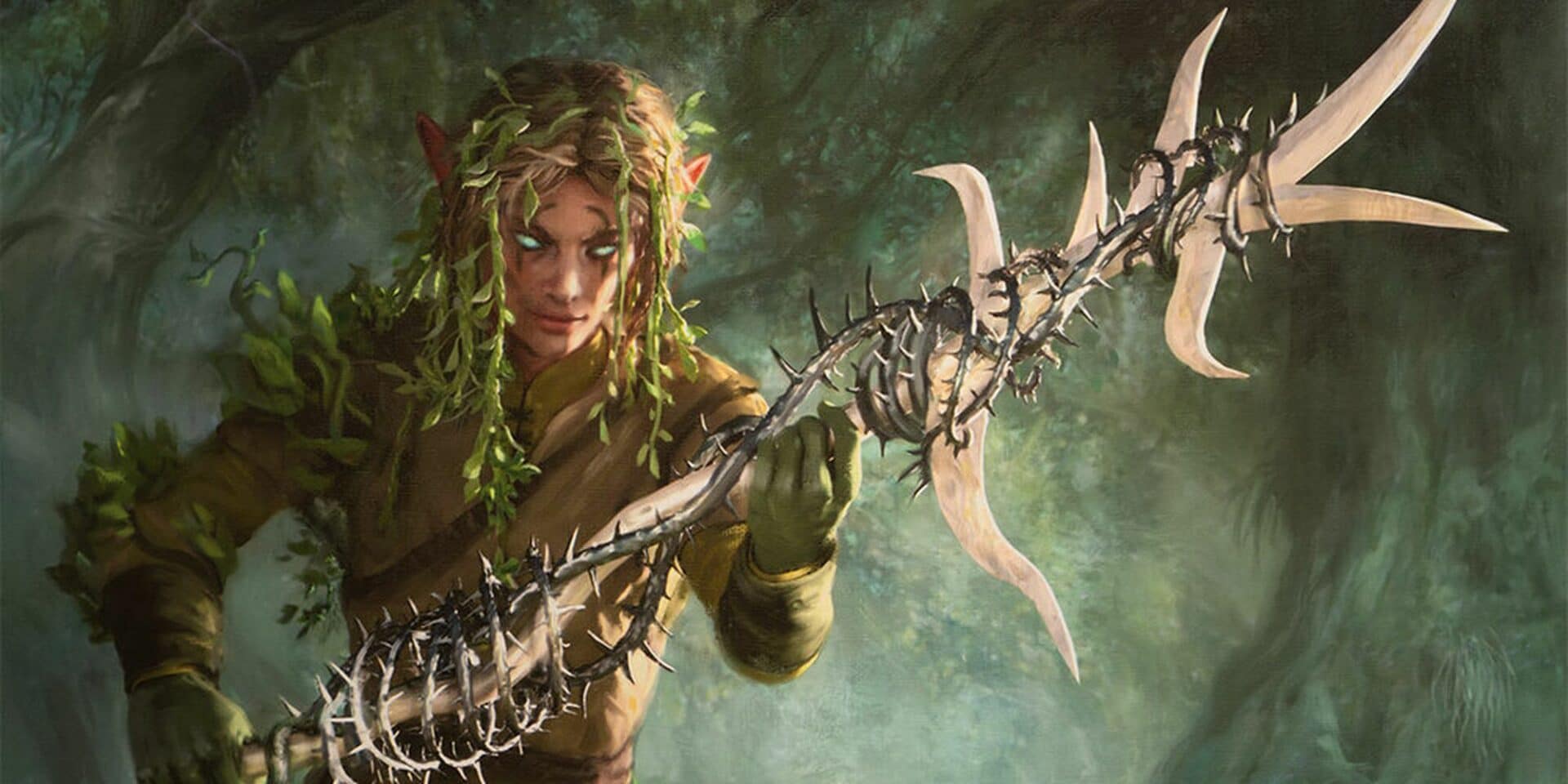Polearm Master 5e
Published on March 12, 2022, Last modified on December 23rd, 2022

Rosethorn Halberd - Wizards of the Coast - Kari Christensen
What Is Polearm Master 5e?
The polearm family of weapons was iconic throughout history and with good reason. They existed in nearly every early civilization and lasted on the battlefield for centuries.
While they aren’t as common in traditional fantasy, they get a spotlight in D&D because of the Polearm Master feat. Today we’ll cover this feat, why it’s good, and the best classes to capitalize on how incredible this feat is.
How Does Polearm Master Work?
If you pick up this feat, you get two stellar benefits:
- While you’ve got a polearm in your hands, other creatures will provoke attacks of opportunity whenever they enter your reach, instead of just when they’re leaving.
- If you make an attack action with a polearm, you can use your bonus action to attack with the opposite end of the weapon for 1d4 bludgeoning damage, using the same ability modifier as the initial attack.
It’s important to note that if you want to benefit from this feat, you need to be using one of the following as a weapon:
- Glaive
- Halberd
- Quarterstaff
- Spear
Additionally, if you are using a pike, you cannot benefit from the bonus action part of this feat. I can’t find a good reason for why it was omitted, aside from Jeremy Crawford (head of D&D Design) saying they’re “too unwieldy.”
If you have a weapon equipped that isn’t one of the weapons listed above, you won’t be able to use the features granted by the feat.
Is Polearm Master Good?
We gave Polearm Master an S Tier rating In our 5e Feats Tier List, making it among the most potent feats in D&D 5e.
Polearm Master is one of those feats that entirely created a build archetype. The bonus action it grants allows you to add your attack bonus to the hit, stretching your damage per round. Taking an opportunity attack when creatures enter your reach is pure action economy and can be especially powerful when combined with the 10ft reach of a halberd or glaive.
Builds that get extra value added to their attacks make excellent use of this feat. For example, paladins, who can get more smite triggers; Battle Masters, who can use their maneuvers; and barbarians, who can add their Rage damage, are among some builds that make effective use of this feat. If combined with other feats like Sentinel, Polearm Master can get so good that it is now considered a faux pas to play a Polearm Master/Sentinel build.
Polearm Master 5e Interactions
Oddly enough, there are a few essential interactions that come up with this feat, such as:
- If you wield a glaive or halberd, you can pair this feat with the Sentinel feat to great effect. When a creature enters your 10-foot reach, you are able to make an opportunity attack. If the attack hits, it drops the creature’s movement to zero. This means that creatures with 5-foot reach won’t be able to reach you with an attack. On your turn, you can back up without provoking an opportunity attack, rinse, and repeat.
- If you cast shillelagh on your weapon, the blunt end’s bonus attack is still a d4, but you do get to add your WIS modifier.
- Attacks of opportunity from this feat can trigger the War Caster feat’s ability to cast specific spells spell. However, you are still limited to that spell’s range (i.e., Booming Blade cannot be cast at 10ft, as the spell is only a 5ft range).
Polearm Master 5e FAQs
What’s the best weapon for Polearm Master?
Glaives and halberds are the most effective weapons if you want pure damage output as they have a d10 damage dice, are compatible with Great Weapon Master, and have the reach property. The only downside of these is the two-handed property which restricts access to a shield. If you want to go for a more defensive build, a spear combined with a shield is a great option. Remember that the spear won’t give you access to the 10ft reach, which makes the Polearm Maser + Sentinel combo so effective. Pikes are the least effective because they cannot be used to perform the bonus action attack.
Can a Pike be used with Polearm Master?
Pikes can benefit from the opportunity attack of this feat, including the range. However, they explicitly cannot use the bonus attack RAW. I would recommend speaking to your DM about pikes and this feat, as pikes are functionally the same as glaives, with the only difference being weight.
Can you use a Spear with Polearm Master?
Yep! Spears are weapons that benefit from both parts of this feat and are ideal in a polearm build if you prefer versatile weapons. Plus, you can use a spear as a one-handed weapon and still benefit from the feat.
Does a Scythe trigger Polearm Master?
Scythes don’t exist in D&D 5e. Well, there’s no official stat block for them, at least. You can talk to your DM and see if they would be okay with reflavoring a glaive or halberd as a scythe or try to create your own homebrew. Historically, war scythes did exist and were classified as pole weapons.
